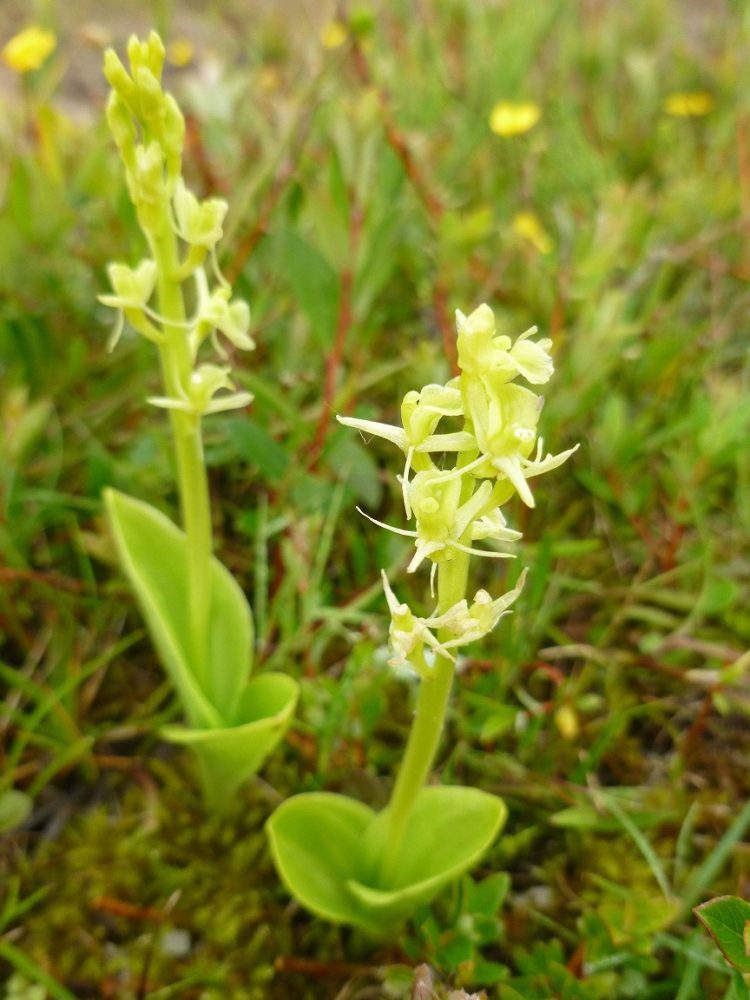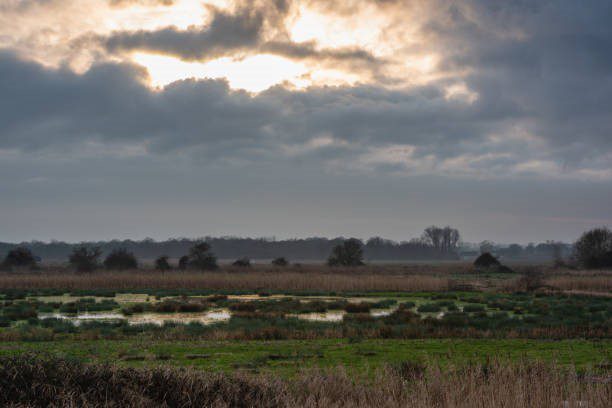
The Norfolk Fen Orchid. Photo courtesy of istock.
The fen orchid, Liparis loeselii, is a small (20cm high), inconspicuous plant native to Europe and North America. Its leaves wrap around the bottom of a single stem which supports several pale yellow-to-green waxy flowers with red spots. Its form differs slightly between the two places where it is found – round leaves in the sand dunes of South Wales and oval in the fens of the Norfolk Broads. It grows in wet areas with bare sand, short grasses and soil with high calcium levels and was once found extensively in such habitats.

But, owing to the drainage of wetlands, herbicide use, habitat loss and peat digging, the species declined seriously, with the result that at the beginning of this century it was on the Red Data List of every European country where it grows. It is now legally protected in eight of them, including the UK. In South Wales it is only found in the Kenfig National Nature Reserve near Bridgend, where its numbers dropped from an estimated 21,000 in the 1980s to just 400 plants by the early 2000s. Its fate was no better in the Norfolk Broads where it was found in a mere handful of Fens.
Fortunately, thanks to research and extensive conservation work over the last ten years it may soon be removed from the Red List in Britain. In Kenfig this work was undertaken by Plantlife (www.plantlife.org.uk) and The Countryside Council for Wales (now part of Natural Resources Wales (www.naturalresources.wales), resulting in 4,000 being counted in 2023 and it is now hoped that active restoration and management of the fragile dune habitat at other sites such as Pembrey and Whiteford will bring it back there too.
Careful management has also enabled the recovery of the Norfolk fen orchid; Plantlife now estimates the population in the Norfolk Broads to be around 15,000 across a larger number of Fens and, with the collaboration of Suffolk Wildlife Trust (www.suffolkwildlifetrust.org), it is being reintroduced to its former sites in Suffolk, with encouraging results.

Fen orchids differ from other plants in that they don’t grow directly in the soil but on clumps of moss or sedge tussocks. They have a complex symbiotic relationship with mycorrhizal fungi, which help them absorb water and nutrients, including carbon. They play other roles in their local ecology too; bees and flies pollinate them and they are a source of food for other organisms including fungi, bacteria and invertebrates. In some areas they are associated with traditional folk medicine and in Ireland they are associated with folklore and cultural practices.
Small and difficult to find as it may be – researchers have even used specially trained tracker dogs to sniff it out – the fen orchid is important for the health of many ecosystems and the preservation of biodiversity. We wish it and those trying to preserve it and increase its abundance continuing success and look forward to seeing it crossed off the Red Data List very soon.
 Alton Climate Action Network
Alton Climate Action Network